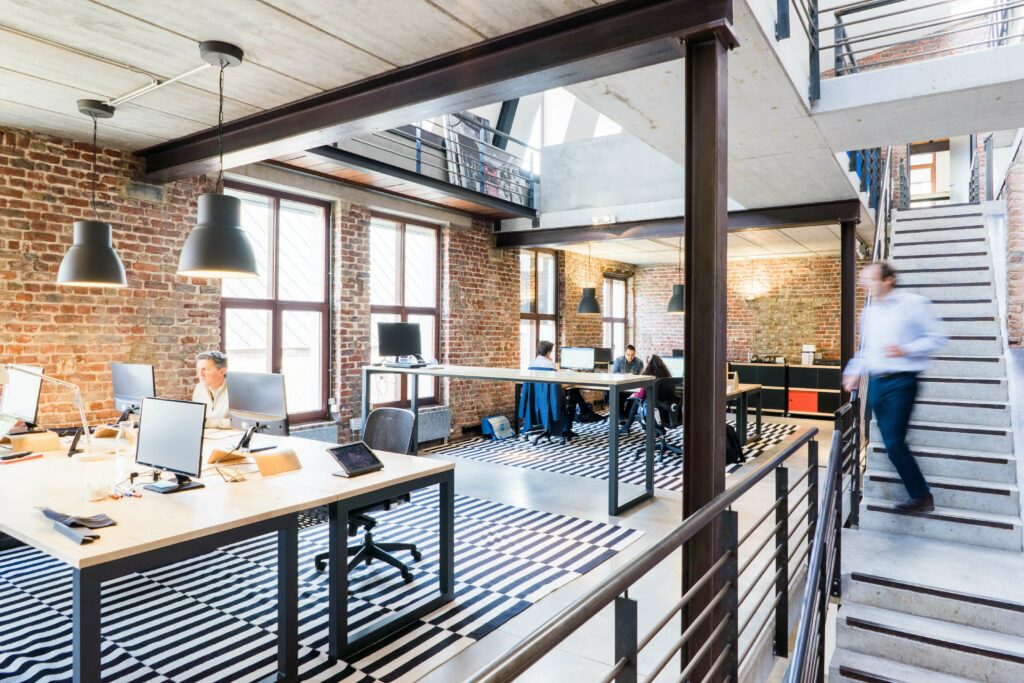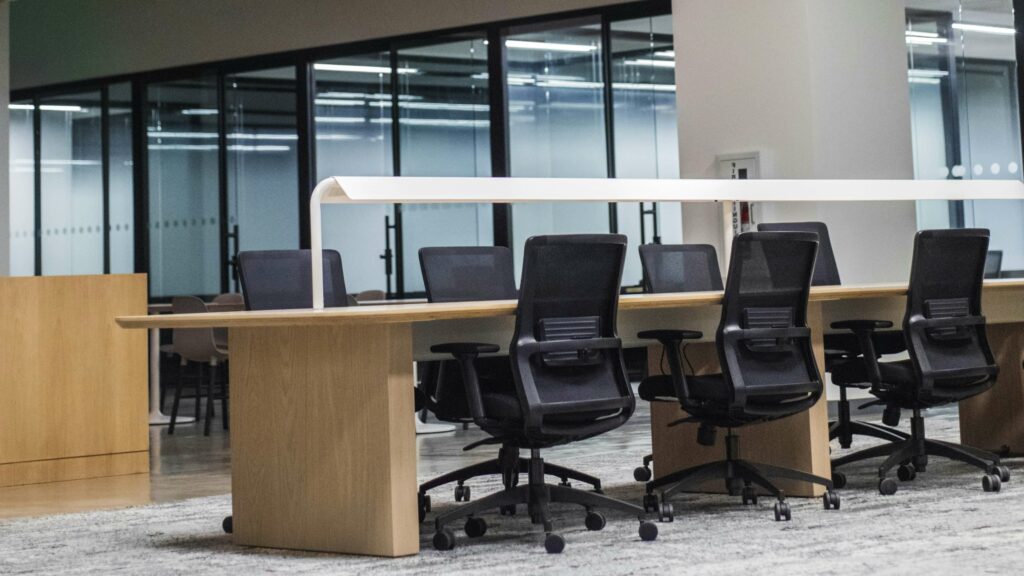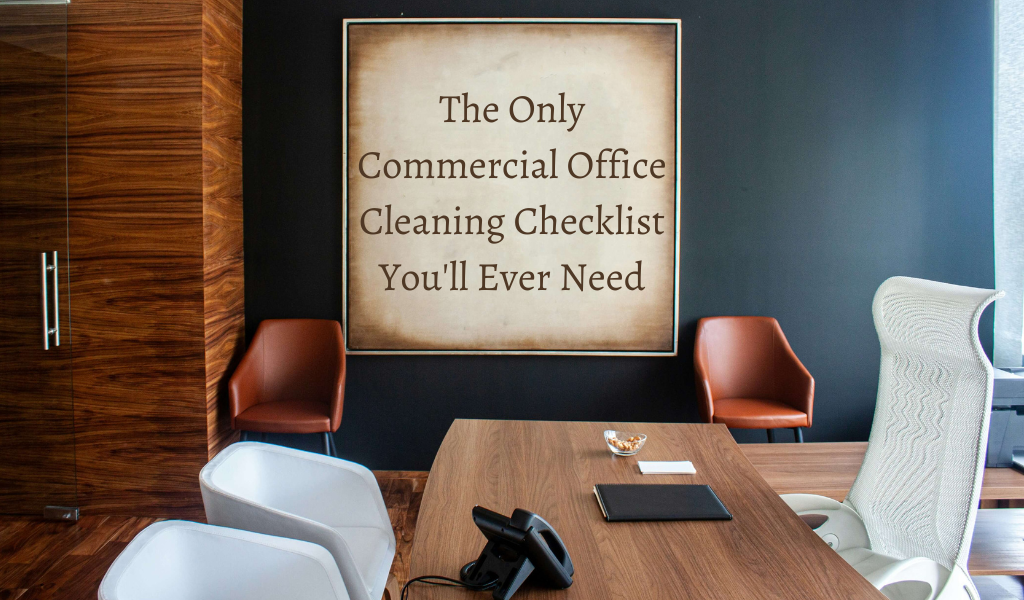The Ultimate Commercial Cleaning Checklist for Any Office
What’s on your commercial office cleaning checklist? Are you using a checklist handed down from a previous cleaner? Is your checklist your own, but the same one you used from your first days on the job years ago? Has the office changed since you started working in the space? If this sounds even remotely familiar, it might be time to update your checklist.
For that matter, it’s always a good move to review your cleaning checklist. For example, while the dwell times for disinfection were always important, those times became especially relevant as office buildings everywhere struggled to keep people safe during the pandemic.
There are even more mundane reasons to review your commercial office cleaning checklist. A new piece of equipment could change the way you work. And, of course, seasonal changes require some flexibility.
That doesn’t mean your checklist needs to be overwhelming. Like so many things, once it’s broken down, it’s just a matter of moving through the list.
There’s a bonus, too. A robust commercial office cleaning checklist is also an excellent marketing tool. While every office is a little different, there are enough similarities that you can showcase your professionalism and thoroughness with an extensive checklist. Instead of telling an office manager what you might do, you can pull out your list and show them, room by room, how your team will give them a clean office that everyone can work in comfortably.
So, tackle all the duties on this commercial office cleaning checklist, and you’ll never need to look at another one.
Bid tracking, to-do lists, cleaning checklists, supply inventory, timekeeping… it’s all here. Janitorial Manager can help you organize all your commercial cleaning operations. Schedule a free call with Janitorial Manager to learn more.

Reception
Reception is the first place everyone sees when they walk into the office. If there’s one place where a commercial cleaning service can help a business make an impression, it’s here.
Visitors will develop an opinion of the company based on how clean and welcoming the reception area is. That’s why it’s vital to keep this area pristine.
Imagine walking into a medical facility only to find stained carpets, spills, or overflowing trash in the reception area! That’s going to reflect on the entire experience. The same is true in an office building.
This means, for the most part, daily cleaning and a few spot checks throughout the day. This is a company’s first impression, and it’s your job to make sure that the appearance reflects the business.
- Ensure welcome mats and front door decor is straight and tidy.
- Clean the front doors inside and out, especially if they’re glass.
- Disinfect door handles and push bars.
- Dust or vacuum HVAC vents.
- Change HVAC filters if indicated.
- Empty all trash receptacles, wipe them down, and replace liners.
- Using disinfectant, wipe down the reception counter, desk, and telephone. If you have a coffee table or other similar furniture in the room, wipe that down as well. If these are glass surfaces, you may also need to clean the underside, as fingerprints and dust are visible.
- Straighten magazines and make the coffee table look presentable.
- Dust tables, chairs, lamps, window shades, vents, and other surfaces.
- Disinfect light switches, heating and AC controls, elevator buttons, etc.
- Vacuum fabric chairs or couches.
- Sweep, vacuum, and/or mop the floors. Deep clean the carpets every few weeks or months, depending on the weather or foot traffic.
- Employ a wet or winter floor cleaning protocol in inclement weather. This may include additional mopping, sweeping, or vacuuming. You may also need to switch entry mats to more weather-appropriate versions.
Cubicles/offices
People working in these offices will spend a significant amount of time in cubicles and offices. Additionally, there will likely be shared spaces, such as conference rooms, shared work surfaces, or other communal spaces.
- Dust or vacuum HVAC vents.
- Change HVAC filters if indicated.
- Dust shelves, cabinets, and other hard surfaces.
- Disinfect light switches, heating and AC controls, elevator buttons, etc.
- Empty trash receptacles, wipe them down, and replace liners.
- Dust computer monitors and keyboards, as well as other computer equipment.
- With disinfectant, wipe down the desk, phone, and chair arms (if applicable).
- Collect any office kitchenware (plates, utensils, mugs, etc.) and return to the kitchen.
- Clean the tops of cubicle partitions.
- If there are windows, dust window blinds/shades as well as the window sill.
- Clean window glass and any other glass surfaces.
- Vacuum or sweep and mop the floors.
Kitchen/Break area
These areas are used by people throughout the day. While some may be in and out just to get a coffee, others will heat up and eat lunches, sit for a coffee, wash their dishes from home, and so on. While your commercial office cleaning checklist can remain pretty steady here, you may need to adjust it somewhat depending on how and how often the break area gets used in your office. There may also be parameters on what you do or do not need to worry about. Some office managers may prefer that you stick to visible surfaces and ignore what’s in the refrigerator, microwave, or cupboards. Other contracts may specificially request that these areas are included.
- Empty refrigerator of all unclaimed items. (Make sure you give the office notice so people can label things they want to keep.)
- Wipe down refrigerator shelves with disinfectant and replace items that people want to keep.
- Wash counters with disinfectant.
- Straighten items on the countertop and make the area look presentable.
- Empty and clean coffee maker.
- Clean water cooler.
- Empty trash and recycling receptacles, disinfect trash receptacles, and replace liners.
- Wash dirty dishes left in the sink.
- Clean sink and faucet with disinfectant.
- Clean and disinfect table tops.
- Vacuum or sweep and mop floors.
Restroom
A clean restroom is the sign of a business that cares. Any commercial cleaning service that prioritizes restroom care will stand out and be appreciated.
- Empty and disinfect trash receptacles and sanitary napkin dispensers (if applicable).
- Disinfect sinks, paper towel dispensers, and/or hand-dryers.
- Disinfect toilets and toilet paper dispensers.
- Use toilet bowl cleaner and brush to clean the toilet bowl.
- Use glass cleaner to wipe down mirror over the sink.
- Clean and refill toilet paper, paper towel, and soap dispensers.
- Clean and ensure hand dryers work properly.
- Sweep and mop floors with a disinfectant solution.
- Disinfect door handles.

Some things to keep in mind
Flexibility is key. Even within a contract, there’s room for change depending on what the situation calls for. It’s also helpful to keep lines of communication open. One easy way to do that is to use janitorial software like Janitorial Manager. Built-in apps like JM Connect and the Client Portal make it easy for you, your team, and your clients to communicate in the most efficient manner.
It’s also helpful to go digital with your commercial office cleaning checklist. With a digital checklist, you can update items easily, and your entire team gets the update instantly. There’s no worry about printing something, getting it to your supervisor, then making sure everyone on your team has the updated checklist.
Another advantage of software like Janitorial Manager is the availability of QR codes. You can use these to delineate spaces within an office facility. A quick scan of the code will give you and your team a list of cleaning tasks for that area. As they get checked off, anyone on your team can get a real-time update and know exactly which checklist items are outstanding.
FAQs
How often should you clean each area?
This is both an easy and difficult question to answer. While each are needs daily attention, that doesn’t mean every task needs to be daily. In part, the details here will depend on things like your contract, seasonal conditions, and how busy the office is.
Some checklist items, such as cleaning restrooms and vacuuming the reception area are daily tasks. If you’re contracted to change HVAC filters, that’s likely a monthly task. Changing to a different entrance mat is likely seasonal, where you can use lighter mats in the summer and heavier, more industrial mats in the winter when you have to consider elements like snow, ice, and general grime.
Stripping and waxing floors might be done once or twice per year. Carpets will need to be shampooed and thoroughly cleaned at least once or twice per year, while some carpets or areas may need monthly deep cleaning. Again, the determination is based on how much foot traffic the space experiences. You also have to consider the climate. Dry sunny weather won’t result in as much carpet damage and soiling as lots of snow and ice.
How is a deep cleaning different from a regular commercial cleaning?
As a commercial cleaning service, how do you differentiate a regular cleaning vs. a deep cleaning? One simple way is to say that a deep cleaning is similar to a regular cleaning, except that it’s much more intensive.
So, instead of sweeping and mopping floors, you strip and wax them. Or in addition to vacuuming, you also shampoo the carpets.
There’s more to it than that, though. A deep clean can involve moving furniture to clean underneath desks and cabinets. It means scrubbing walls and moving things so you can reach the entire surface. Other hard-to-access areas are also part of deep cleaning, like ceiling fans. For customers, you might explain it as the difference between what they do at home for regular cleaning and spring cleaning.
How can Janitorial Manager help me with this?
Some of the most important qualities for success in the commercial cleaning field are organization and communication. Janitorial Manager helps on both fronts. From digital checklists to tracking cleaning tasks to scheduling regular and deep cleaning projects, Janitorial Manager keeps everything in one place, so it’s easy to access for you and your team. And with communication tools like JM Connect and client portals, you can relax knowing that important messages and communications will always reach their destination.
From workloading to maintenance schedules, Janitorial Manager can help you organize your entire office cleaning operation. Schedule a free call with Janitorial Manager and make your work easier and more profitable.


Finding a trustworthy cleaning service is very important. This article is really helpful. Thanks for sharing.
I would like to have a list for commercial cleaning duties please.